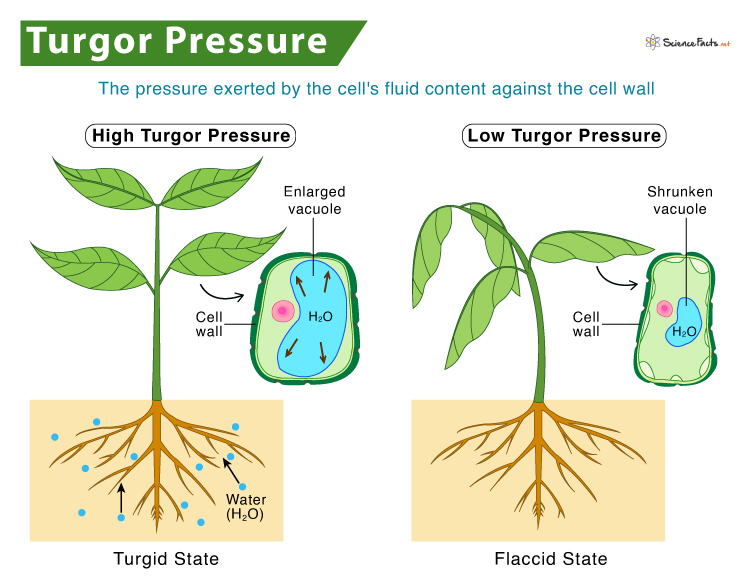The term ‘turgor’ came from the Latin word ‘turgere’, meaning ‘to be swollen.’ The word ‘pressure’ comes from ‘pressura’, meaning ‘to press’. As an example, think of a balloon filled with water instead of air.
How does it Develop in a Plant Cell
Turgor Pressure and Osmoregulation
How to Calculate Turgor Pressure
Importance of Turgor Pressure
When placed in a hypertonic solution, water flows out of the cell, causing the cell to decrease in volume and become flaccid. When excess water moves out of the cell the cell is said to be plasmolyzed. The turgor pressure in a cell is least during this phase. In an isotonic solution, water flows in and out of the cell at an equal rate. Thus, no change in cell turgidity occurs. Another important organelle in plants that helps to maintain the turgor pressure within the cell is the vacuole. They regulate the uptake of ions, sugars, and other solutes, making the intracellular fluid hypertonic compared to the extracellular environment. Since the solute concentration in the cell interior is high compared to outside, water is drawn inside the cell. The net influx of water helps the plant cell to show and experience the turgor pressure. Some standard units used to measure turgor pressure are bars, MPa, and Newtons per square meter. The widely used methods to measure turgor pressure: equation of water potential, pressure-bomb technique, atomic force microscopy, pressure prove, and micro-manipulation probe. Biologically, the opening of stoma occurs when K+ ions enter the guard cells, allowing water to flow inside the cells. This water influx results in increased turgor pressure in the guard cells. In contrast, stoma remains closed when K+ ions leave the cell causing water efflux and a loss of turgidity in the guard cells.
Other Functions in Plants
Rigidity
It is vital to terrestrial plants for their survival. Turgor pressure provides the necessary mechanical strength and rigidity that helps the plant keep upright against gravity and other environmental stresses such as wind and flood. It also helps to align the plant towards the sun and thus helps in photosynthesis.
Growth
Turgidity generates stress within the cell that causes expansion of the cell wall. This cell expansion helps in the apical growth of root tips. High turgor pressure is also associated with leaf expansion, which is considered a growth sign in plants.
Flowering
Turgidity in plants is maintained through the conduction of water and minerals through the xylem and phloem. It allows reproduction in flowering plants through the formation of flowers, fruits, and seeds.
Seed Dispersal
Turgor pressure allows fruits to detach from the stalk, burst open the seeds, and distribute them to the nearby areas from where a new plant can develop. Seed dispersal also helps in pollination and thus in plant reproduction.
Nastic Movements
Turgor pressure helps in plants’ internal movement in response to environmental stimuli, a process known as a nastic movement. Some plants during nighttime assume sleeping positions. It occurs due to low turgor pressure in leaves than the pulvinar cells found at the base of a plant leaf or the petiole’s apex. Leaves of the touch-sensitive plant such as Mimosa pudica also droop due to a loss in their turgidity.
Functions in Other Organisms
Fungi: It helps penetrate their hyphae in substances such as plant cells and synthetic materials such as polyvinyl chloride. Turgor pressure also affects the growth of their hyphae. A decrease in turgor pressure is associated with a decrease in hyphal growth. Protists: Some protists do not have cell walls and use their contractile vacuoles to regulate turgidity within the cell. They avoid cell lysis with the help of their vacuoles that pumps water out. Diatoms: They have turgor-resistant cell walls. Diatoms maintain the desired turgor pressure carefully throughout their life cycle, helping cell expansion and sperm release. Cyanobacteria: They float in water due to the accumulation of gases within their vacuole. It is made possible due to turgor pressure. It is observed that the higher the turgor pressure, the lower is the capacity of the gas vacuoles in a different cyanobacterium.
